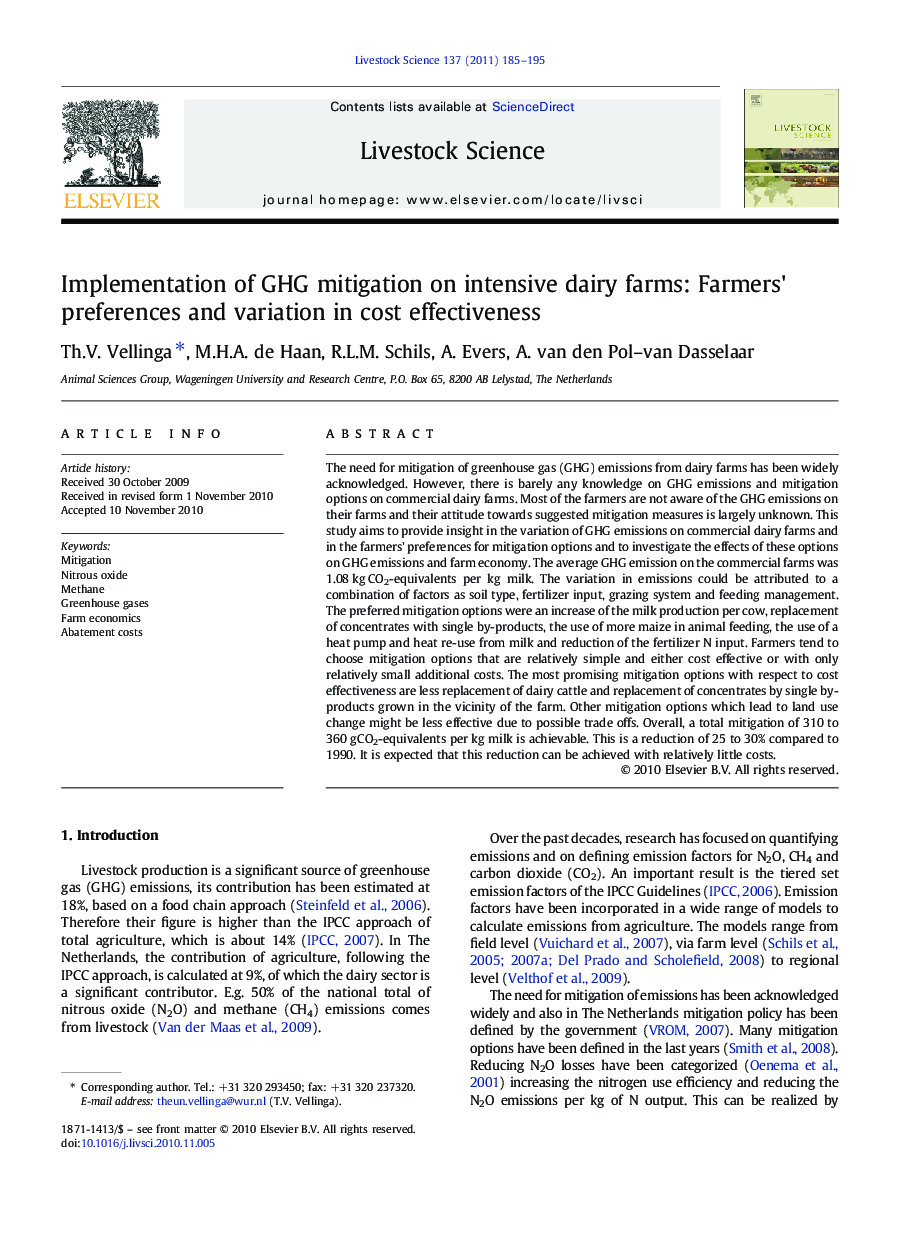| کد مقاله | کد نشریه | سال انتشار | مقاله انگلیسی | نسخه تمام متن |
|---|---|---|---|---|
| 5790976 | 1553995 | 2011 | 11 صفحه PDF | دانلود رایگان |
عنوان انگلیسی مقاله ISI
Implementation of GHG mitigation on intensive dairy farms: Farmers' preferences and variation in cost effectiveness
دانلود مقاله + سفارش ترجمه
دانلود مقاله ISI انگلیسی
رایگان برای ایرانیان
کلمات کلیدی
موضوعات مرتبط
علوم زیستی و بیوفناوری
علوم کشاورزی و بیولوژیک
علوم دامی و جانورشناسی
پیش نمایش صفحه اول مقاله

چکیده انگلیسی
The need for mitigation of greenhouse gas (GHG) emissions from dairy farms has been widely acknowledged. However, there is barely any knowledge on GHG emissions and mitigation options on commercial dairy farms. Most of the farmers are not aware of the GHG emissions on their farms and their attitude towards suggested mitigation measures is largely unknown. This study aims to provide insight in the variation of GHG emissions on commercial dairy farms and in the farmers' preferences for mitigation options and to investigate the effects of these options on GHG emissions and farm economy. The average GHG emission on the commercial farms was 1.08 kg CO2-equivalents per kg milk. The variation in emissions could be attributed to a combination of factors as soil type, fertilizer input, grazing system and feeding management. The preferred mitigation options were an increase of the milk production per cow, replacement of concentrates with single by-products, the use of more maize in animal feeding, the use of a heat pump and heat re-use from milk and reduction of the fertilizer N input. Farmers tend to choose mitigation options that are relatively simple and either cost effective or with only relatively small additional costs. The most promising mitigation options with respect to cost effectiveness are less replacement of dairy cattle and replacement of concentrates by single by-products grown in the vicinity of the farm. Other mitigation options which lead to land use change might be less effective due to possible trade offs. Overall, a total mitigation of 310 to 360 g CO2-equivalents per kg milk is achievable. This is a reduction of 25 to 30% compared to 1990. It is expected that this reduction can be achieved with relatively little costs.
ناشر
Database: Elsevier - ScienceDirect (ساینس دایرکت)
Journal: Livestock Science - Volume 137, Issues 1â3, May 2011, Pages 185-195
Journal: Livestock Science - Volume 137, Issues 1â3, May 2011, Pages 185-195
نویسندگان
Th.V. Vellinga, M.H.A. de Haan, R.L.M. Schils, A. Evers, A. van den Pol-van Dasselaar,